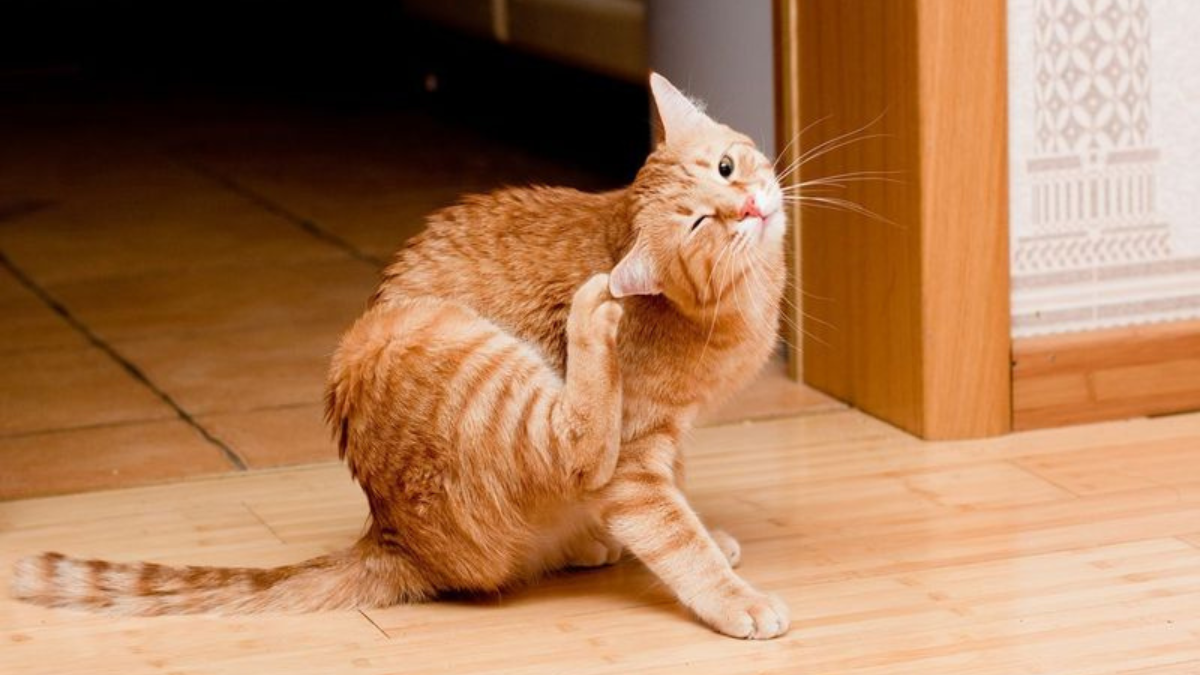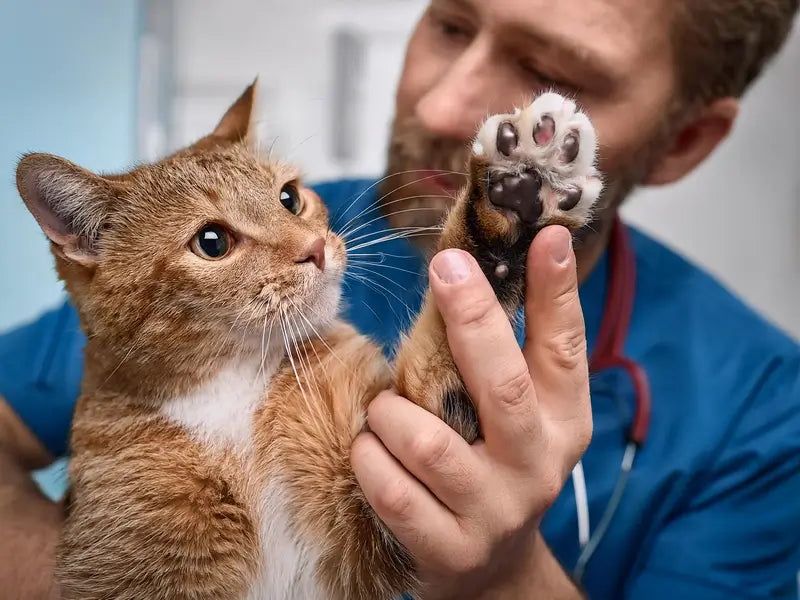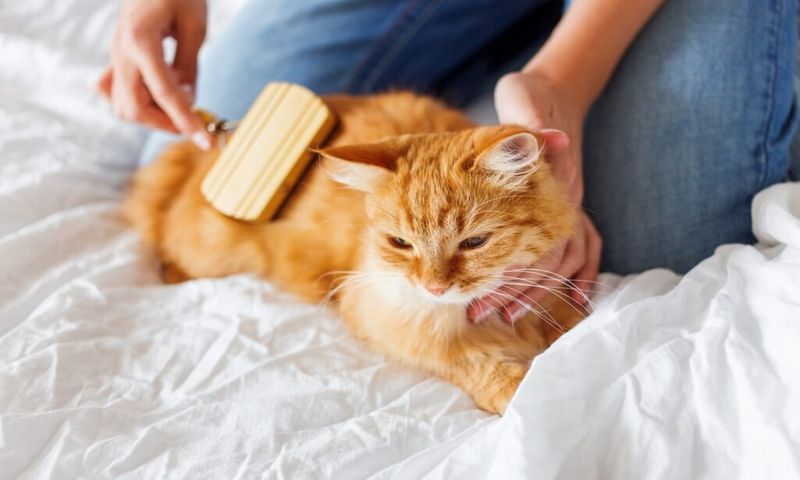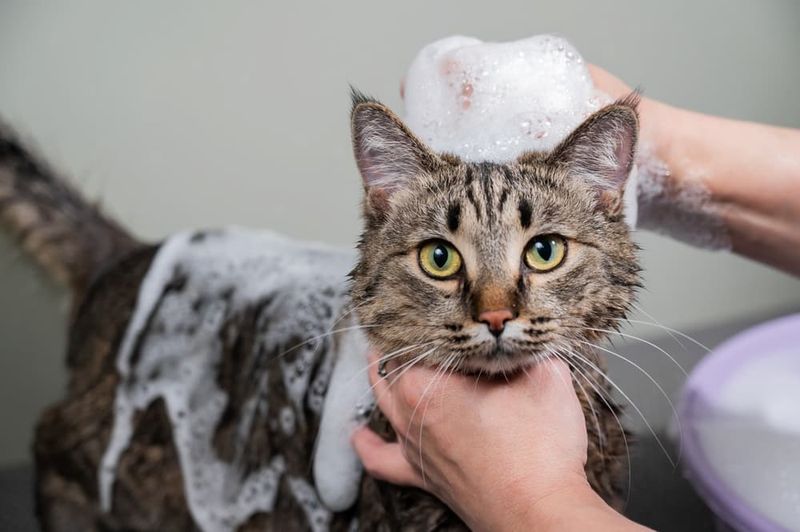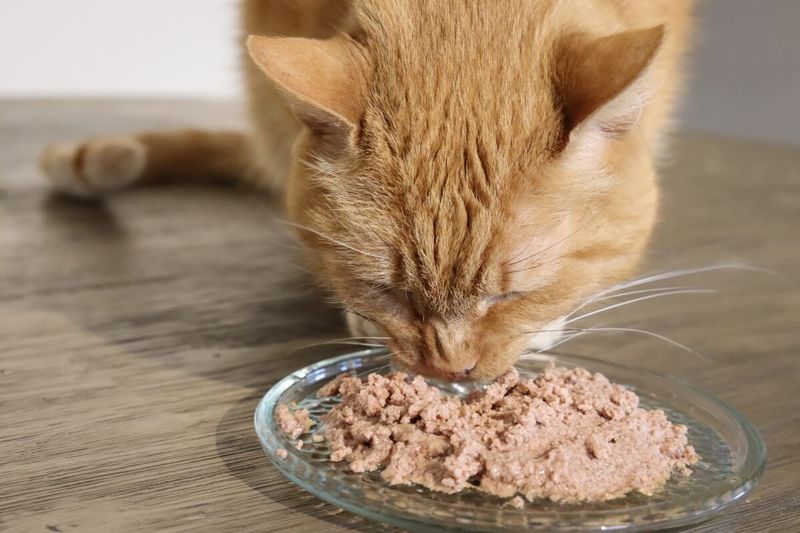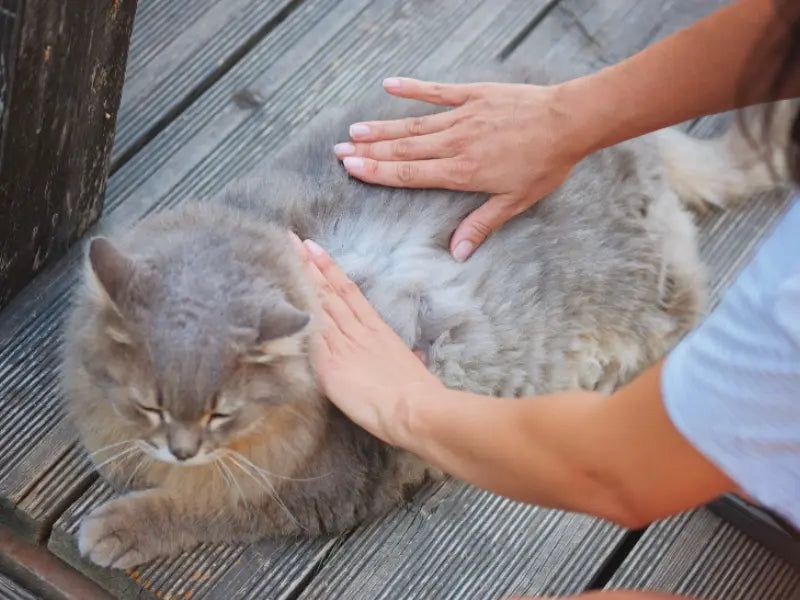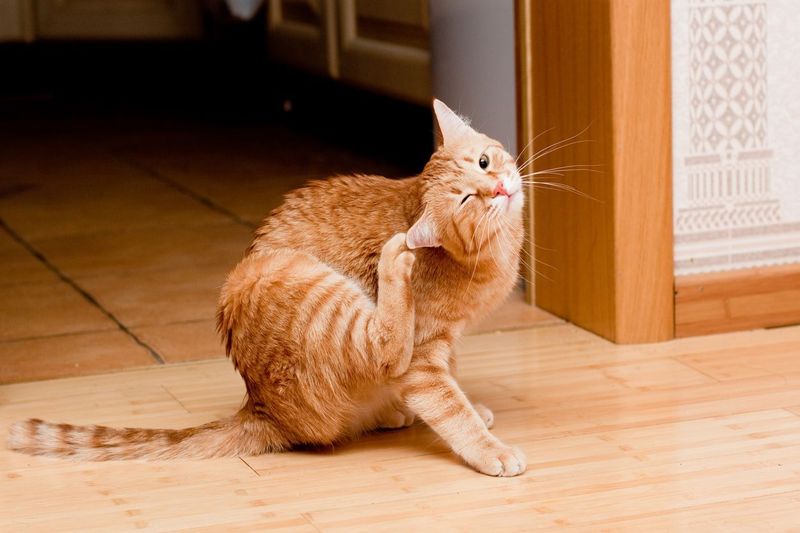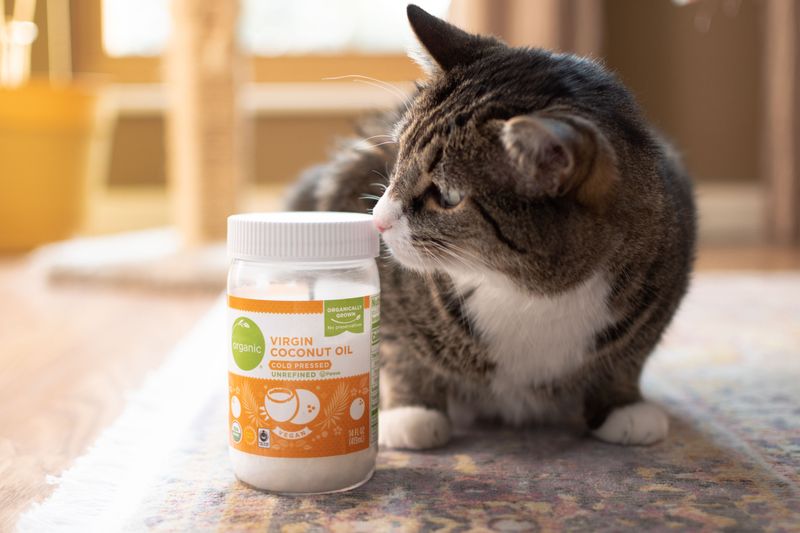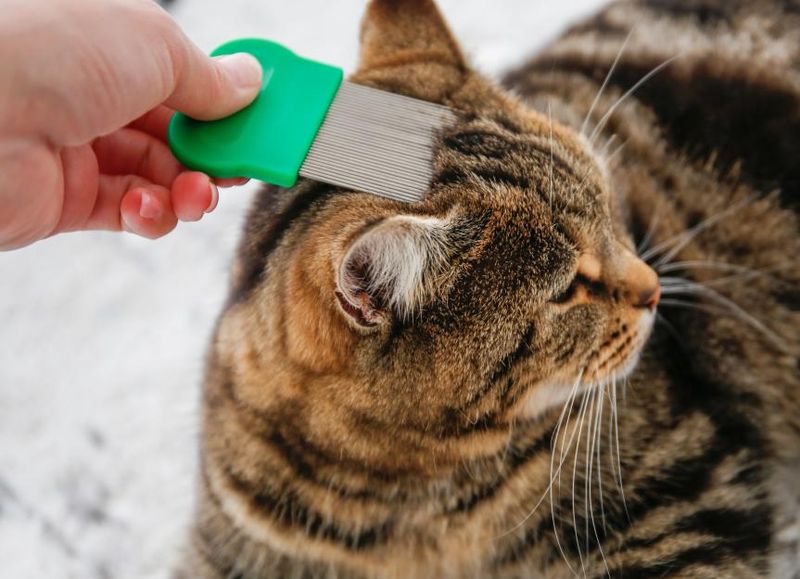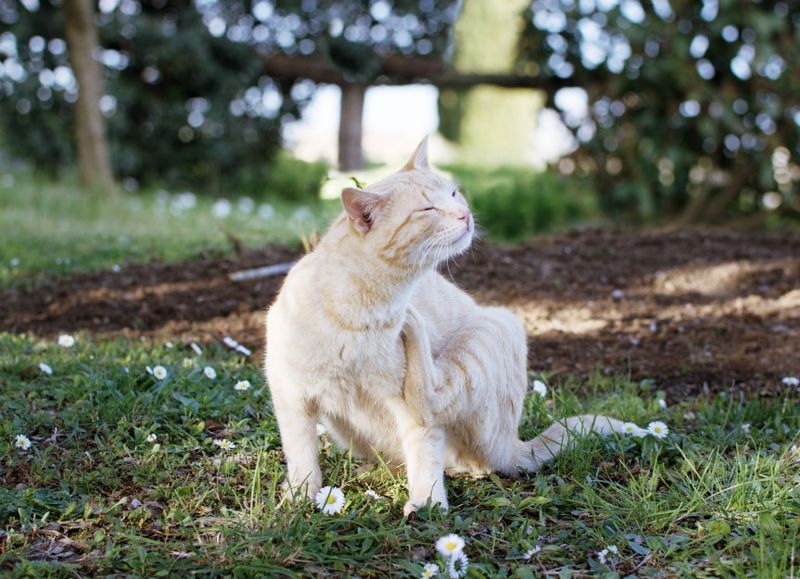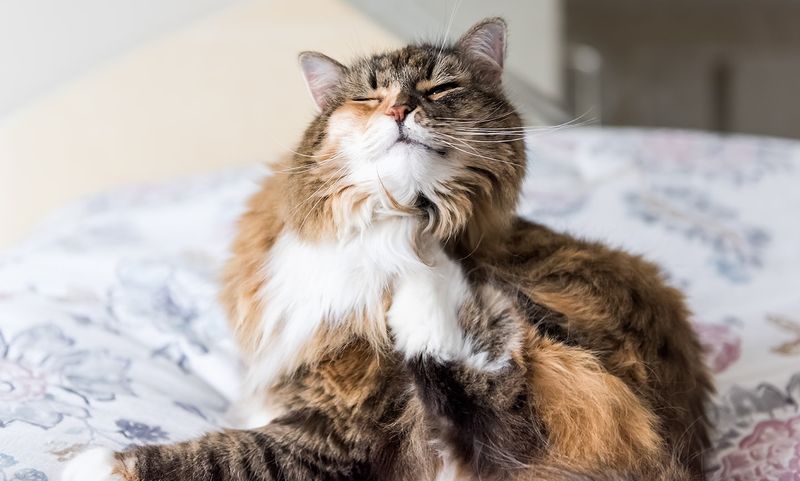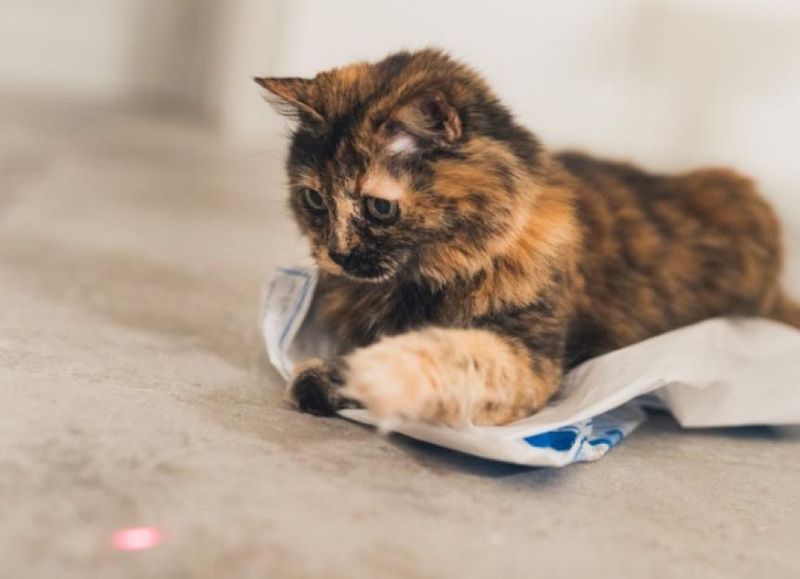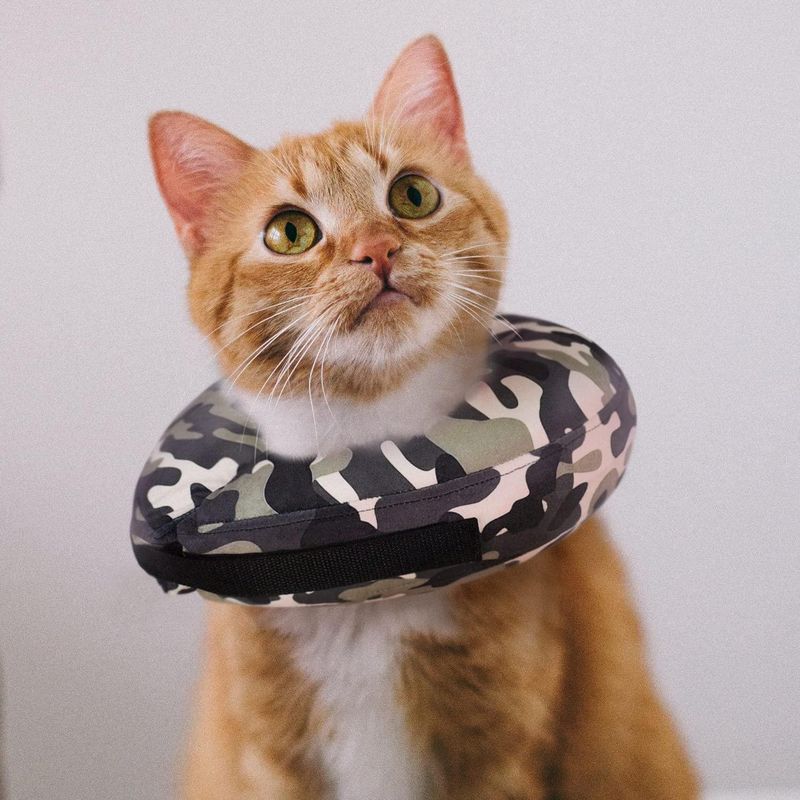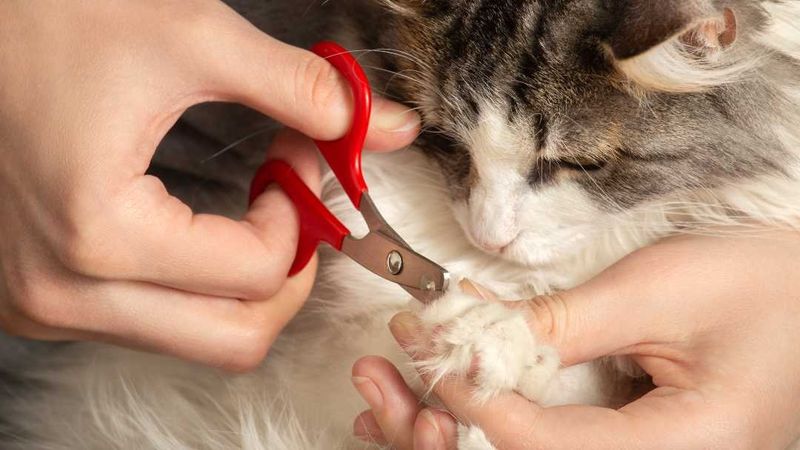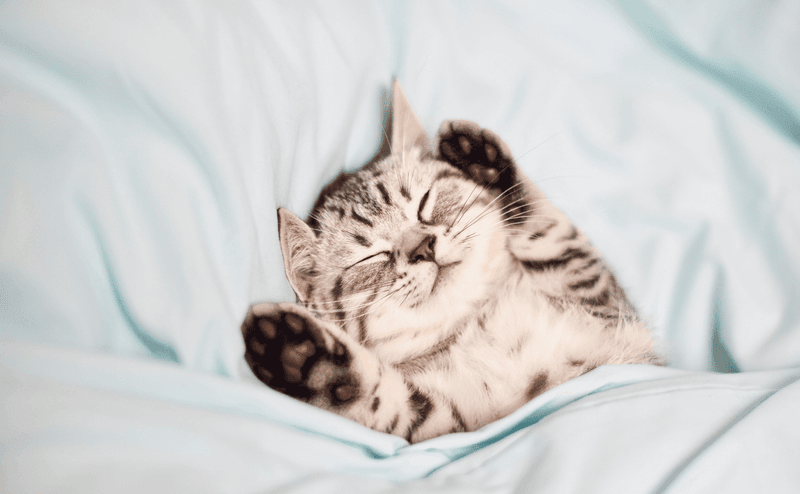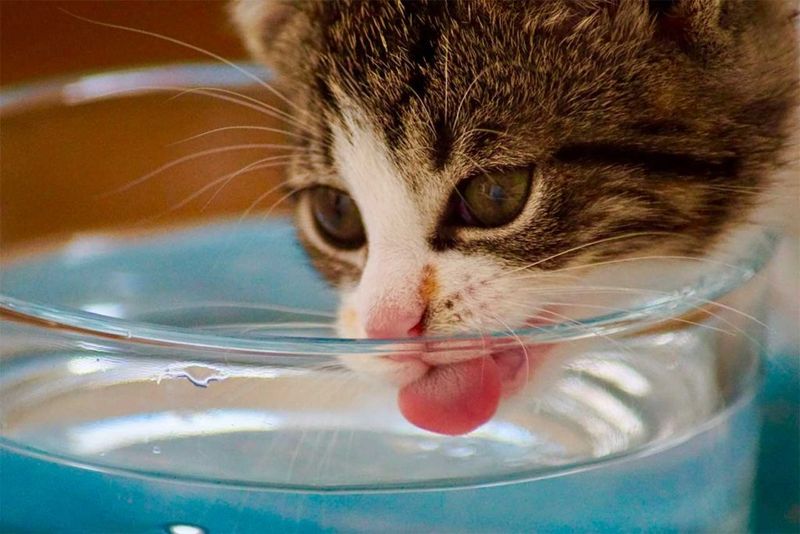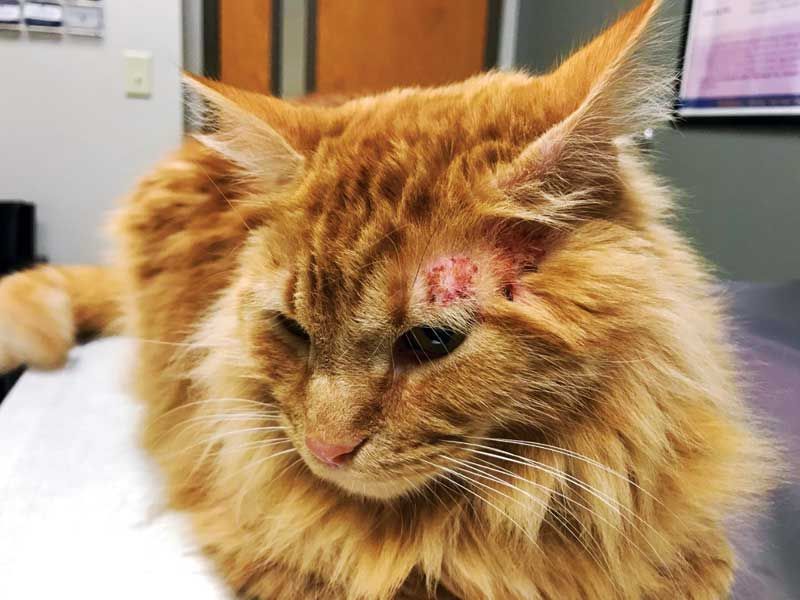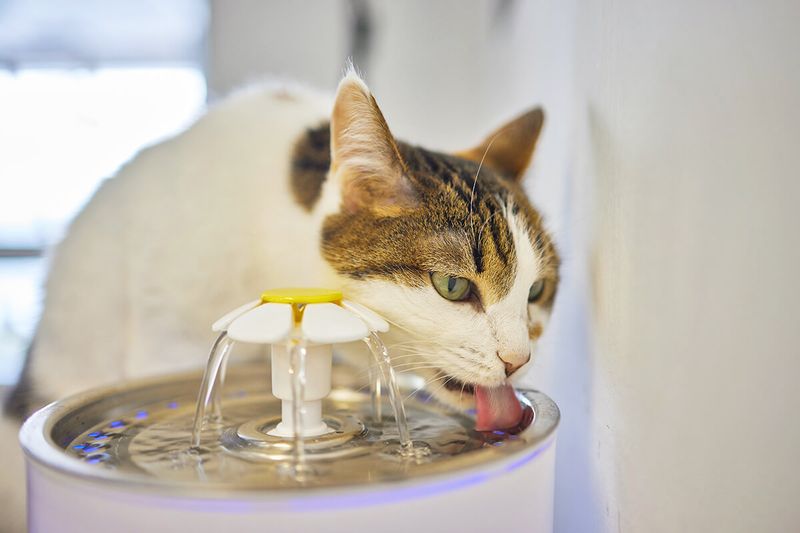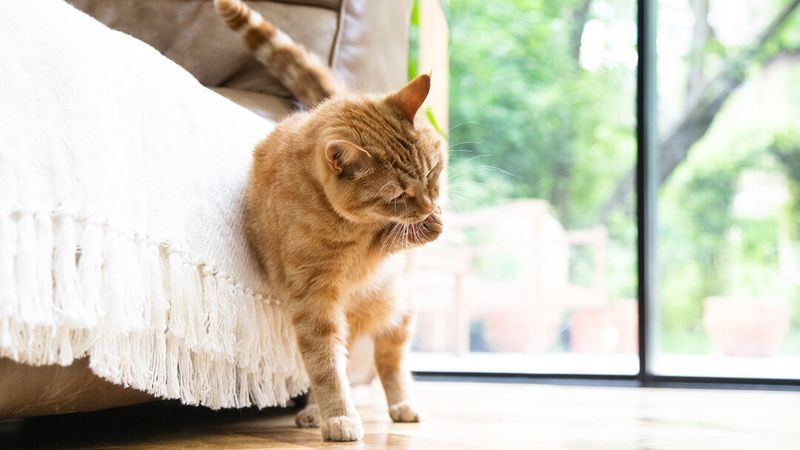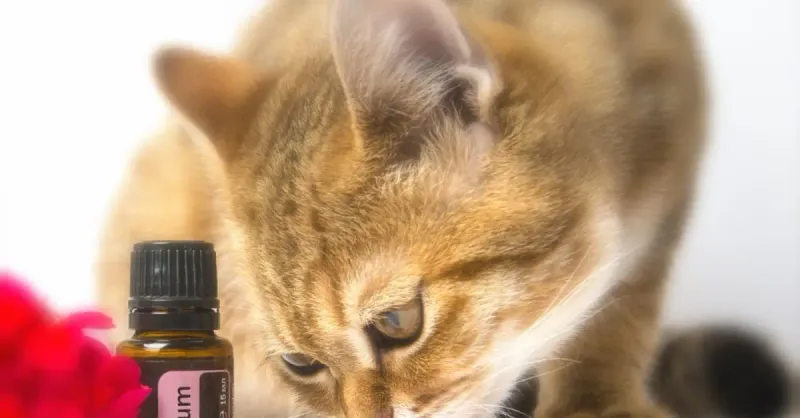📖 Table of Content:
- 1. Schedule a Vet Check-up
- 2. Brush Your Cat Daily
- 3. Try an Oatmeal Bath
- 4. Switch to Hypoallergenic Food
- 5. Add Omega-3 Fatty Acids
- 6. Eliminate Environmental Allergens
- 7. Apply Coconut Oil Sparingly
- 8. Use a Flea Comb Regularly
- 9. Try a Gentle Anti-Itch Spray
- 10. Install a Humidifier
- 11. Create Distraction Techniques
- 12. Consider an E-collar When Necessary
- 13. Keep Your Cat’s Nails Trimmed
- 14. Provide Clean Bedding
- 15. Try a Diluted Apple Cider Vinegar Rinse
- 16. Monitor for Food Sensitivities
- 17. Provide Fresh Water Constantly
- 18. Reduce Stress in Your Cat’s Environment
- 19. Try Pet-Safe Essential Oils
Cats with itchy skin can become miserable, irritable, and downright uncomfortable. When your feline friend won’t stop scratching, it’s not just annoying – it’s a sign they need help. The good news is that many cat itching problems can be solved with simple home remedies and lifestyle changes before heading to the vet. Let’s explore practical ways to bring relief to your scratchy kitty.
1. Schedule a Vet Check-up
The first step in helping an itchy cat is getting professional advice. Your vet can determine if the itching stems from allergies, parasites, or something more serious that requires medication. Many skin conditions look similar to untrained eyes, but treatments vary drastically.
For example, fungal infections need antifungal medication, while allergies might require antihistamines. Bring along notes about when the itching started and any other symptoms you’ve noticed. This information helps your vet make an accurate diagnosis faster.
2. Brush Your Cat Daily
Regular brushing removes loose fur, dander, and potential allergens that might be causing irritation. The right brush can reach deep into your cat’s coat, collecting debris that causes itchiness. Cats with longer fur benefit from brushing sessions at least once daily.
Short-haired breeds still need brushing 2-3 times weekly to maintain healthy skin. Brushing also distributes natural oils throughout your cat’s coat, reducing dry skin. Plus, most cats enjoy the attention and bonding time that comes with gentle grooming.
3. Try an Oatmeal Bath
Oatmeal contains compounds that soothe irritated skin naturally. Grind plain, unflavored oatmeal into a fine powder and mix it with warm water until it forms a paste. Apply this mixture to itchy spots, avoiding eyes and ears. Let it sit for 10 minutes before rinsing thoroughly with lukewarm water.
Most cats won’t enjoy the bathing process, so have treats ready! For cats who absolutely refuse baths, commercial oatmeal-based wipes designed specifically for pets can provide similar relief without the full bathing experience.
4. Switch to Hypoallergenic Food
Food allergies frequently cause skin problems in cats. Common culprits include chicken, beef, fish, and certain grains that trigger immune responses, resulting in itchy skin. Veterinary-recommended hypoallergenic foods contain novel protein sources your cat hasn’t encountered before, like duck or venison.
These specialized diets minimize the chance of allergic reactions. Transition gradually by mixing increasing amounts of new food with the old over 7-10 days. Quick changes can upset your cat’s stomach, creating new problems while you’re trying to solve the itching.
5. Add Omega-3 Fatty Acids
Omega-3 supplements strengthen your cat’s skin barrier and reduce inflammation. These essential fatty acids help maintain skin moisture and flexibility, decreasing flakiness and irritation. Fish oil supplements designed specifically for cats provide the right dosage without harmful additives.
Always choose pet-formulated products rather than human supplements, which may contain ingredients toxic to cats. Results aren’t immediate – expect to wait 4-6 weeks before seeing improvements. Consistency matters more than high doses, so follow package instructions carefully rather than assuming more is better.
6. Eliminate Environmental Allergens
Your home might harbor invisible irritants, causing your cat’s itching. Dust mites, pollen, mold spores, and cleaning chemicals commonly trigger allergic reactions in sensitive cats. Vacuum frequently using a machine with a HEPA filter that traps microscopic particles.
Wash your cat’s bedding weekly in hot water with fragrance-free detergent to kill dust mites and remove allergen buildup. Consider removing scented products like air fresheners, candles, and heavily perfumed cleaners. Many cats react poorly to artificial fragrances that humans barely notice.
7. Apply Coconut Oil Sparingly
For itchy or dry spots, organic coconut oil offers both moisture and antimicrobial support. It’s effective on flaky skin and minor irritations. Soften a little by rubbing it between your fingers before applying.
Gently massage it into affected areas, keeping portions tiny to prevent excessive grooming and ingestion. Limit application to once daily and watch for any adverse reactions. While generally safe if ingested in small amounts during grooming, too much can cause digestive upset or diarrhea in sensitive cats.
8. Use a Flea Comb Regularly
With tightly spaced teeth, flea combs help remove fleas and debris from your cat’s coat. Even indoor cats are at risk, picking up fleas from people or other animals. Pay extra attention to the tail base, neck, and belly when combing.
Keep a bowl of soapy water nearby to drown any fleas you find. Regular combing helps detect infestations early before they become major problems. The process also removes flea dirt (digested blood that looks like black pepper), which can cause additional skin irritation.
9. Try a Gentle Anti-Itch Spray
Veterinary-approved anti-itch sprays can provide quick relief for localized itching. Look for products containing calming ingredients like aloe vera, chamomile, or hydrocortisone that reduce inflammation without harsh chemicals.
Test a small area first to ensure your cat doesn’t have a negative reaction. Many cats dislike spray sounds, so consider spraying the product onto your hands first, then applying it to affected areas. Never use human anti-itch products without veterinary approval. Ingredients safe for humans can be toxic when cats groom themselves, potentially causing serious health problems.
10. Install a Humidifier
Dry indoor air, especially during winter months with heating systems running, can lead to dehydrated skin that becomes itchy and flaky. Cats with skin issues often benefit from added moisture in the air. Place a humidifier in rooms where your cat spends most time.
Aim for humidity levels between 40-60% – enough to help skin without creating conditions for mold growth that could worsen allergies. Clean your humidifier regularly according to the manufacturer’s instructions. Dirty units can spread bacteria or mold spores, potentially making your cat’s condition worse instead of better.
11. Create Distraction Techniques
Breaking the itch-scratch cycle sometimes requires redirecting your cat’s attention. Interactive toys that engage hunting instincts can help your cat forget about itching temporarily, reducing self-trauma from excessive scratching.
Puzzle feeders that dispense treats provide mental stimulation while creating positive associations. The activity helps reduce stress, which can worsen itching in some cats. Schedule several short play sessions throughout the day rather than one long session. Consistent distraction helps prevent your cat from falling back into habitual scratching behaviors.
12. Consider an E-collar When Necessary
For severe cases where scratching creates wounds, an Elizabethan collar (E-collar) prevents further self-injury while treatments take effect. Modern versions include soft fabric alternatives that are more comfortable than traditional plastic cones.
Introduce the collar gradually if possible, offering treats and praise. Many cats initially resist wearing anything around their necks, but adaptation usually occurs within 24-48 hours. Remove the collar for supervised periods to give your cat breaks throughout the day. Always monitor a cat wearing an E-collar to ensure they can eat, drink, and use the litter box comfortably.
13. Keep Your Cat’s Nails Trimmed
Regularly trimmed claws cause less damage when your cat does scratch. Blunt nails reduce self-trauma to the skin, allowing irritated areas to heal faster without constant reopening of wounds.
Use cat-specific nail clippers and trim just the sharp tips, avoiding the pink quick that contains blood vessels and nerves. If your cat resists nail trims, try wrapping them gently in a towel with just one paw exposed at a time. Establish a routine of trimming just 1-2 nails per day if your cat is particularly resistant. This gradual approach causes less stress than attempting all nails at once.
14. Provide Clean Bedding
Dust mites and accumulated allergens in bedding can worsen skin irritation. Washing your cat’s favorite sleeping spots weekly eliminates these invisible irritants that trigger itching episodes. Choose bedding materials made from natural fibers like cotton that are less likely to cause irritation.
Avoid synthetic materials that can generate static electricity and trap heat, potentially worsening skin discomfort. Consider using dust mite-proof covers for pet beds that create a barrier between your cat and potential allergens. These specialized covers still feel comfortable while blocking microscopic irritants.
15. Try a Diluted Apple Cider Vinegar Rinse
Apple cider vinegar’s natural antimicrobial properties can help with minor fungal or bacterial skin issues. Mix one part raw, unfiltered apple cider vinegar with three parts water to create a gentle rinse. Apply the solution to affected areas using a clean cloth, avoiding open wounds, eyes, and ears.
The mild acidity helps restore skin pH balance, creating an environment less hospitable to irritating microorganisms. Never use this remedy on cats with open sores, as the vinegar will sting painfully. If your cat shows any signs of discomfort during application, discontinue use immediately and rinse the area with clean water.
16. Monitor for Food Sensitivities
Food reactions often develop gradually, making them hard to identify without systematic observation. Keep a detailed food journal, noting what your cat eats and when itching episodes occur to identify potential patterns. Single-protein diets simplify the detection process by limiting variables.
Feed your cat one protein source (like turkey or rabbit) with minimal other ingredients for 8-12 weeks while monitoring skin condition. Gradually reintroduce potential allergens one at a time, waiting two weeks between new additions. If itching returns after adding a specific ingredient, you’ve likely found a trigger that should be permanently eliminated.
17. Provide Fresh Water Constantly
Proper hydration supports healthy skin from within. Dehydrated cats often develop dry, flaky skin that becomes itchy and uncomfortable, especially in low-humidity environments. Place multiple water bowls throughout your home to encourage drinking.
Many cats prefer their water source separate from food bowls, as this mimics their natural instinct to avoid contaminating water with food. Consider a cat water fountain that provides moving water. The flowing stream appeals to many cats’ preference for fresh water and often increases overall fluid intake, improving skin hydration naturally.
18. Reduce Stress in Your Cat’s Environment
Stress can trigger or worsen skin problems through psychogenic mechanisms. Cats experiencing anxiety often overgroom, creating bald patches and skin irritation that leads to more itching. Create safe spaces where your cat can retreat when feeling overwhelmed.
Vertical territory, like cat trees and quiet hiding spots, gives your cat control over their environment, reducing anxiety-related behaviors. Maintain consistent routines for feeding, play, and attention. Cats thrive on predictability, and sudden changes to their schedule can trigger stress responses that manifest as skin problems.
19. Try Pet-Safe Essential Oils
Certain diluted essential oils can soothe irritated skin when used properly. Lavender oil diluted at less than 0.5% in a carrier oil like coconut or olive oil has gentle calming properties for both skin and nervous system.
Never apply essential oils directly to your cat’s skin or allow them to ingest any amount. Most essential oils are toxic to cats in concentrated forms because their livers cannot process these compounds effectively. Always consult your veterinarian before trying any essential oil therapy. What works for humans can be dangerous for cats, whose sensitive systems process chemicals differently than ours.
